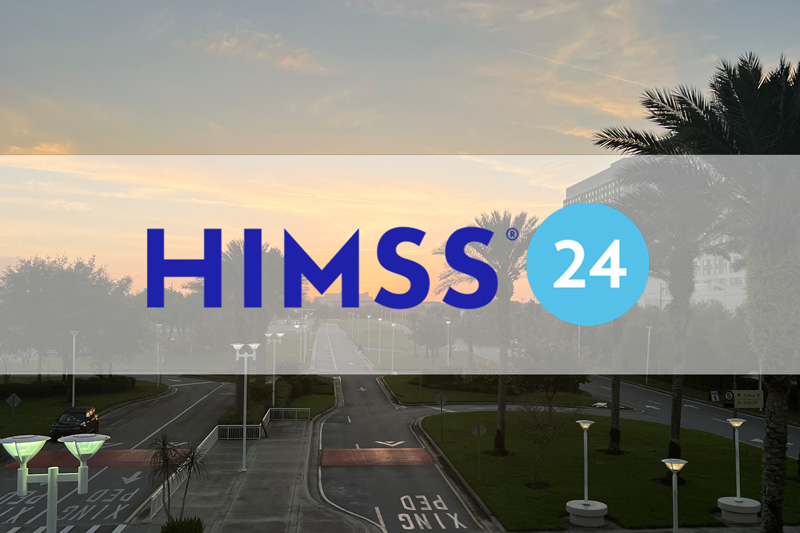For healthcare to deliver meaningful results, it will have to adapt to new ways of thinking and adopt new technologies to reach patients. It will also need to make sure that its technology infrastructure is protected from threats – especially those from within the organization itself.
Those were some of the key messages from the HIMSS Southern New England conference, held by New England HIMSS in Newport, Rhode Island on August 22nd, which focused on telehealth and cybersecurity. Here are some of the main takeaways from the event.
Telehealth: Now a reality
The morning started with a presentation from Sarah Sossong, principal at Flare Capital Partners, a venture capital firm based in Boston. Sossong talked about her experiences implementing telehealth programs at Kaiser Permanente and Massachusetts General Hospital.
Sossong first talked about why healthcare organizations should consider implementing telehealth (improving outcomes, increasing access, decreasing costs). She also discussed which services are most appropriate for telehealth and the importance of implementing metrics in order to measure progress.
Value from virtual #telehealth programs – Sarah Sossong, principal of @FlareCapital #NewEnglandHIMSS pic.twitter.com/8lMe6WBnjz
— New England HIMSS (@NewEnglandHIMSS) August 22, 2019
Uses for #telehealth are widespread: @FlareCapital Principal Sarah Sossong delivers session on advancing care via #enterprise telehealth at #NewEnglandHIMSS pic.twitter.com/6xN69LB1XZ
— Heather Caouette (@HeatherC_PR) August 22, 2019
“If you can’t measure it, you can’t improve it.” <— value of KPIs and tracking improvement in #telehealth. #NewEnglandHIMSS pic.twitter.com/OWQLOc7AM5
— Kathy Sucich (@ksucich) August 22, 2019
The bottom line from Sossong was that telehealth is now a viable undertaking for healthcare organizations, but one that requires forethought and strategic thinking before diving into it.
Finding new ways to address behavioral health is critical
Talk about a sobering moment: at the beginning of his presentation at the HIMSS Southern New England conference, Dr. Steven Locke, founder and CMO of iHope Network and former associate professor of psychiatry at Harvard Medical School, asked audience members if they personally knew anyone who committed suicide. More than half the room raised their hands. When he asked if anyone had an extended family member with mental illness, nearly everyone raised their hands.
The prevalence of mental health issues is steadily increasing, but unfortunately, access to services is astonishingly low. According to statistics cited by Locke, over half of counties in the U.S. have no mental health professionals.
More than half of U.S. counties have no behavioral health specialists + other alarming stats on mental health <— how can we increase access to #behavioralhealth services? #NewEnglandHIMSS pic.twitter.com/uU96EDi9Os
— Kathy Sucich (@ksucich) August 22, 2019
Locke talked about how many people use online applications to help with mental health, but that these are largely ineffective. They are more effective when used in tandem with clinical care.
Locke’s organization provides telemedicine options for behavioral health patients. Telemedicine can provide a viable solution to reduce depression and anxiety scores among patients. It can also bring mental health professionals to patients who don’t otherwise have access.
To be sure, there are several challenges with such a model. Locke’s organization needs to ensure quality among clinicians. It also has to figure out issues such as interoperability and clinical data sharing since providers are dispersed across geographies. These are challenges Locke is willing to take on, though, in order to combat the alarming stats.
Enjoyed Dr Steven Locke teaching us about the collaborative care model and integrated telebehavioral health #NewEnglandHIMSS pic.twitter.com/2tf20VK2ev
— Pat Rioux (@pat_rioux) August 25, 2019
Cybersecurity: An insider’s job
Finally, two speakers at the HIMSS Southern New England conference addressed the issue of cybersecurity. Salve Regina professor Matthew McMahon talked about how 58% of threats in healthcare have some type of insider component to them. Furthermore, of those threats that are physical, 95% involve stolen unencrypted laptops.
McMahon also talked about how one-third of data breaches are not discovered for years. Another one-third are not discovered for several months.
This is alarming. #CyberSecurity #NewEnglandHIMSS https://t.co/buaZLmOSWC
— Heather Caouette (@HeatherC_PR) August 22, 2019
McMahon’s remedies for insider threats:
• Hospitals should properly segment access to sensitive data
• They should implement strong audit processes
• They should provide more resources on security training
• Cybersecurity training should be a part of clinical programs before providers enter the workforce
Another speaker who addressed the topic of cybersecurity was Chris Logan of VMWare. He talked about how the biggest threat to security is not underfunding of security, but it is actually a hyper-focus on security threats. Logan argued that healthcare organizations spend more time being reactive and chasing threats when they should be preventive by reducing the attack surface.
Preventive measures have a much greater impact on reducing risk, but organizations currently spend about 80% of their budget on reactive measures. Logan’s tips for security include:
• Reducing the attack surface
• Securing applications and data
• Making security intrinsic
Listening to @logancm77 from @VMwareHIT speaking at #NewEnglandHIMSS Teleheath and Cybersecurity event on the increase of healthcare breaches and cyber threats. “Focus on looking from the inside, out.” #cybersecurity #NEHIMSS #shamelessNEHIMSSplug @NewEnglandHIMSS pic.twitter.com/OglvLdvsjg
— Amy Chacko (@ChackotacoTHE1) August 22, 2019
Closing thoughts
With new realities in healthcare – new forms of payment, trends in disease and well-being – all of us in the industry need to be open to new ways of reaching and treating patients. Telehealth provides new, exciting opportunities. And while there are many challenges to be worked out, ultimately it will help increase access and improve patient outcomes.
However, we also need to be aware of threats and recognize that with new technologies comes new security challenges. Again, we must be open to new ways of thinking about cybersecurity.
Finally, I want to extend a big thank you to New England HIMSS for putting on this great event. It was nice to get out and meet leaders in the local healthcare industry – and to have the HIMSS Southern New England conference in such a fantastic locale at Ochre Court in Newport, Rhode Island.
Our next New England HIMSS event will be the HIE Advocacy Day, held at Holy Cross College in Worcester, Massachusetts on October 10th. Hope to see you there!
For more reading
- The Future of Healthcare: What Can We Expect by 2025?
- Takeaways from New England HIMSS: The Human Side of Healthcare Technology
- HIMSS19: Seeing Real Results from Healthcare Technology
- Solving Hospital CEOs’ Pressing Challenges With Analytics - April 15, 2024
- Navigating the Wellness Wave: Wine & Spirits Data Strategy - April 9, 2024
- Takeaways from HIMSS24 - March 26, 2024



